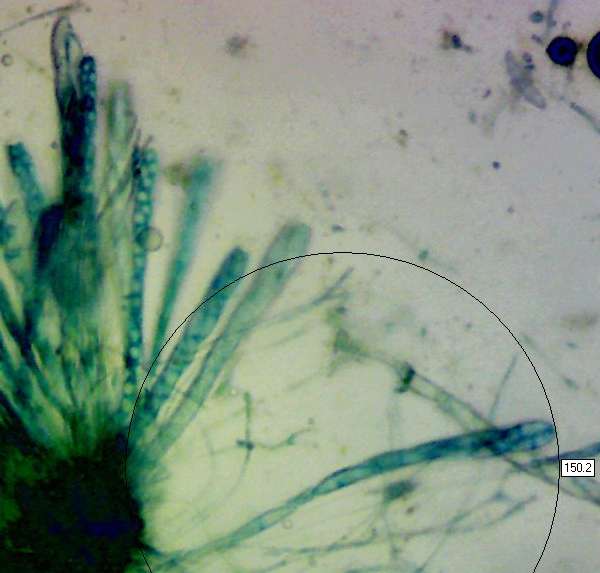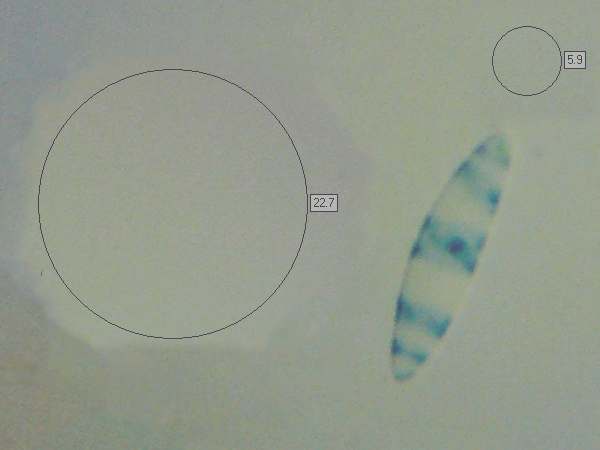Leotia lubrica (Scop.) Pers. - Jellybaby
Phylum: Ascomycota - Class: Leotiomycetes - Order: Leotiales - Family: Leotiaceae
Distribution - Taxonomic History - Etymology - Identification - Culinary Notes - Reference Sources
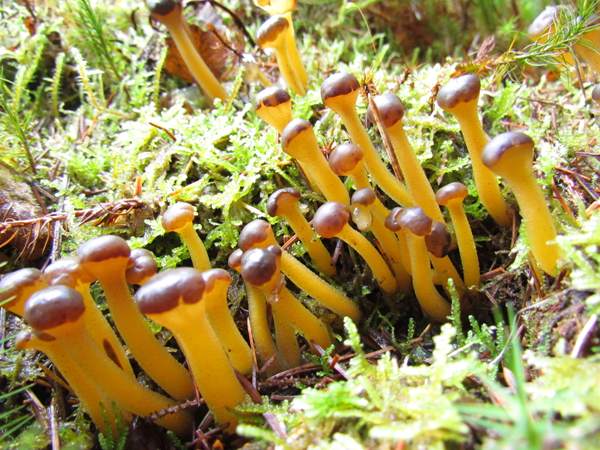
Commonly known as Jellybabies, these rubbery fungi look superficially like cap-and-stem mushrooms, but beneath the irregular caps the surface is smooth rather than being gilled. Despite their common name, these innocuous-looking little fungi are inedible.
Although the specimens shown here are lemon yellow, it is not uncommon to find golden yellow or even orange Jellybabies; the caps are often furrowed and convoluted rather than smooth, shiny and neatly domed.
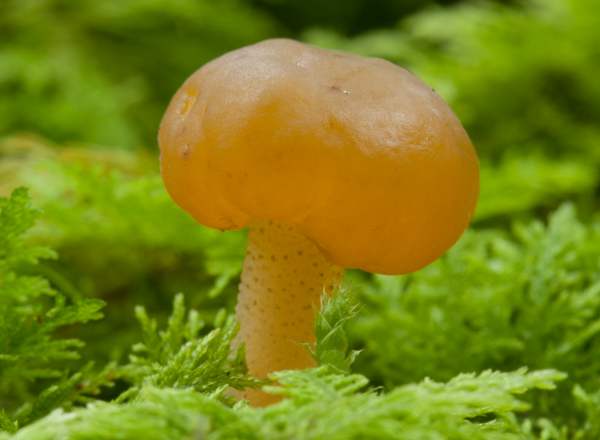
Distribution
Leotia lubrica is common but localised in Britain and Ireland, where it occurs in all kinds of woodland but most commonly with conifers. This ascomycete species is also found throughout most of mainland Europe and in North America.
Taxonomic history
When in 1772 Italian mycologist Giovanni Antonio Scopoli described this species scientifically, he gave it the binomial name Helvella lubrica, thus establishing its basionym. In 1794 Christiaan Hendrik Persoon transferred this species to the genus Leotia (which was established in the same year by Persoon himself), whereupon its scientific name became Leotia lubrica. Leotia lubrica is the type species of its genus.
Synonyms of Leotia lubrica include Leotia gelatinosa Hill, Helvella lubrica Scop., and Peziza cornucopiae Hoffm.
Etymology
The specific epithet lubrica means slimy, but perhaps sticky or gummy might have been more appropriate.
Identification guide
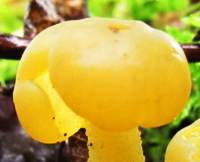 |
CapThe caps are initially round but soon develop wavy margins. Up to 15mm across, but more commonly 8 to 10mm. The fertile upper surface is smooth, shiny and usually greenish brown or yellowish. StemTypically 2 to 4cm tall, the stems are 5 to 7mm across and sometimes slightly flattened with a roughish (scurfy) surface and soft, jelly-like pale flesh inside. |
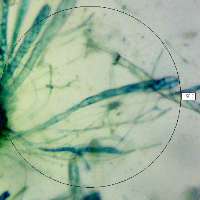 |
AsciUsually eight-spored, typically 150 x 10µm; interspersed with filiform paraphyses.
|
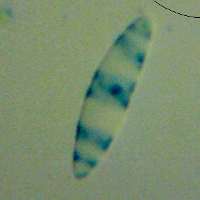 |
SporesFusiform, often curved, 20-25 x 5-6µm; variably 3- to 8-septate when fully mature.
Spore printWhite. |
Odour/taste |
Not distinctive. |
Habitat & Ecological role |
Saprobic, in deciduous and coniferous woodland, often beside footpaths or growing on the banks of drainage ditches, particularly among damp mosses of concealed under bracken. |
Season |
August to October in Britain and Ireland. |
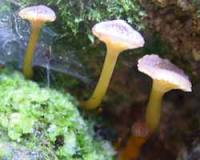 |
Similar SpeciesLeotia infundibuliformis (Schaeff.) Fr. (possibly shown of the left) is of similar size and colour but it develops a funneled cap beneath which the wrinkled surface is decurrent to the stem - somewhat resembling Cantharellus tubaeformis. This species is very rare, with only one British record; it is found more often in parts of southern Europe. The specimens shown on the left were seen near Monchique in southern Portugal. Leotia viscosa is of similar size and shape to Leotia lubrica but this rare species differs in having a dark green cap. |
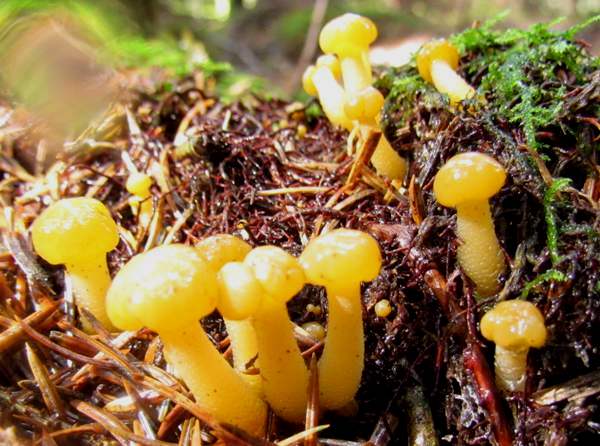
Culinary notes
Although some field guides suggest that these are edible fungi, others claim that they are inedible. The majority view seems to be that despite their common name Jellybaby, these fungi are of no significant culinary interest.
Reference Sources
Fascinated by Fungi, 2nd Edition, Pat O'Reilly 2016, reprinted by Coch-y-bonddu Books in 2022.
Dennis, R.W.G. (1981). British Ascomycetes; Lubrecht & Cramer; ISBN: 3768205525.
Breitenbach, J. & Kränzlin, F. (1984). Fungi of Switzerland. Volume 1: Ascomycetes. Verlag Mykologia: Luzern, Switzerland.
Medardi, G. (2006). Ascomiceti d'Italia. Centro Studi Micologici: Trento.
Dictionary of the Fungi; Paul M. Kirk, Paul F. Cannon, David W. Minter and J. A. Stalpers; CABI, 2008
Taxonomic history and synonym information on these pages is drawn from many sources but in particular from the British Mycological Society's GB Checklist of Fungi.
Fascinated by Fungi. Back by popular demand, Pat O'Reilly's best-selling 450-page hardback book is available now. The latest second edition was republished with a sparkling new cover design in September 2022 by Coch-y-Bonddu Books. Full details and copies are available from the publisher's online bookshop...

